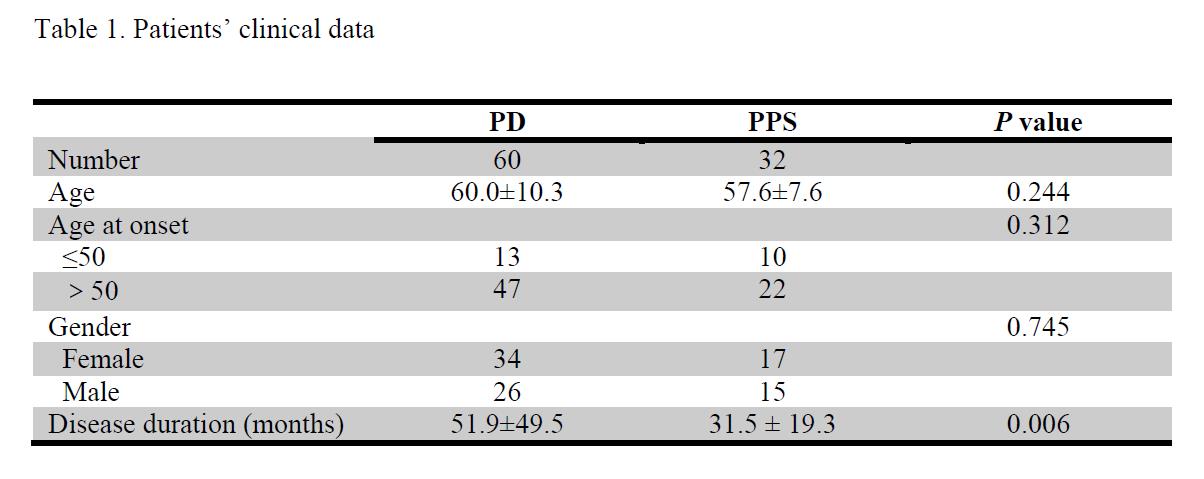Session Information
Date: Tuesday, September 24, 2019
Session Title: Parkinsonisms and Parkinson-Plus
Session Time: 1:45pm-3:15pm
Location: Agora 3 West, Level 3
Objective: To investigate the diagnostic value of 131I-MIBG cardiac scintigraphy in differentiating PD from other parkinsonism for distinct age of onset.
Background: MIBG cardiac sympathetic imaging has been demonstrated to be promising in differentiating Parkinson’s disease (PD) from other neurodegenerative parkinsonism. Age at onset has an impact on cardiac MIBG uptake in PD, but not in multiple system atrophy (MSA) or progressive supranuclear palsy (PSP). In the present study, we will discuss the interaction between age at onset and disease group for H/M ratios.
Method: Sixty PD patients and thirty-two Parkinson plus syndrome (PPS) patients were retrospectively reviewed. Patients were grouped into the early-onset group and late-onset group (age at onset ≤50 y/o and >50 y/o respectively) according to the time they first developed motor symptoms. Early and delayed scan (15min and 4h post-injection respectively) of 131I-MIBG cardiac scintigraphy was performed. Heart-to-mediastinum (H/M) ratio was calculated.
Results: The clinical data were summarized in Table 1. The disease duration of PD patients was significantly longer than PPS patients. After controlling for disease duration using one-way ANCOVA, there was a statistically significant difference in the adjusted H/M ratio (P<0.001 for both early and delayed scan) between PD and PPS patients. Using two-way ANOVA, there was a significant interaction between disease group and age at onset for both early (P=0.008) and delayed H/M ratio (P=0.043). Subgroup analysis (Table 2) demonstrated that no significant difference was found between PD and PPS patients in the early-onset group for either early (P=0.882) or delayed H/M (P=0.468) ratio. In the late-onset group, PD patients demonstrated significant lower H/M ratio compared with PPS patients for both early and delayed images (1.71±0.32 vs. 2.14±0.34, P<0.001). Using ROC analysis, the H/M ratio can be used to differentiate PD from PPS (AUC=0.749 and 0.784 for the early and delayed scan, respectively). By deselecting early-onset patients, the discrimination power can be further improved (AUC=0.812 and 0.824 for the early and delayed scan, respectively) in late-onset patients.
Conclusion: There is an interaction between age at onset and disease group for H/M ratios. 131I-MIBG cardiac sympathetic imaging is less promising in differentiating PD from other parkinsonism for early-onset patients.
To cite this abstract in AMA style:
D. Xu, WJ. Zhu, H. Wang, L. Huo. 131-MIBG is less promising in differentiating Parkinson’s disease from other parkinsonism for early onset patients [abstract]. Mov Disord. 2019; 34 (suppl 2). https://www.mdsabstracts.org/abstract/131-mibg-is-less-promising-in-differentiating-parkinsons-disease-from-other-parkinsonism-for-early-onset-patients/. Accessed January 1, 2026.« Back to 2019 International Congress
MDS Abstracts - https://www.mdsabstracts.org/abstract/131-mibg-is-less-promising-in-differentiating-parkinsons-disease-from-other-parkinsonism-for-early-onset-patients/


